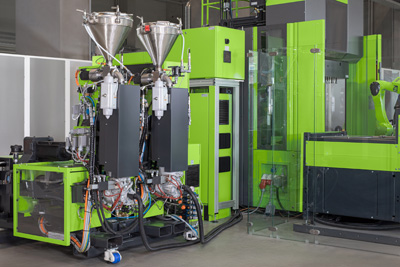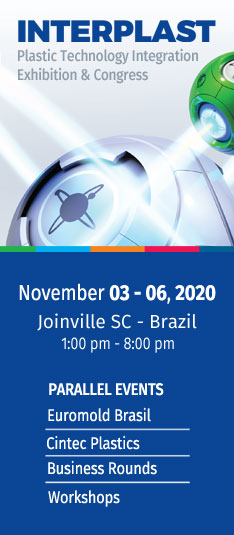| Plastics News |
Engel´s reactive unit for in-situ polymerization of ε Caprolactam now available in two sizes
In-situ polymerization opens up many opportunities in the production of fibre-reinforced plastic components with a thermoplastic polyamide matrix. Based on dry reinforcement textiles, polymerization and moulding are combined, enabling particularly efficient and automated processes in series production, for example, in lightweight automotive engineering. Engel says that the decisive factor for processing efficiency and product quality is the reactive unit it developed specifically for the preparation and injection of ε Caprolactam. Engel has systematically further optimised its solution with a new, smaller size. January, 16, 2020 -Now offering two sizes, Engel claims that it covers a wide range of applications while supporting its customers from product and process development, through scale-up to series production. The company says that the new smaller reactive unit can handle matrix volumes between 10 and 600 cm³, offering great flexibility, especially for testing facilities, in the production of test parts, specimens and parts up to a weight of 1.5 kilograms. The second, larger unit can process matrix volumes of up to 1500 cm³. Both units are compact. They integrate the complete media supply and reduce the footprint required for the entire system, the manufacturer says. In in-situ polymerization, the thermoplastic RTM process, pre-shaped dry fibre preforms are infiltrated directly in the mould cavity with the reactive matrix. Thanks to ε Caprolactam's low viscosity in molten state, the dry fibres can be wetted particularly well. Compared to duroplastic RTM, longer flow paths and a higher fibre content are possible. When the ε Caprolactam is polymerized to create polyamide 6, a composite with particularly high load-bearing capacity is formed that can be functionalised by injection moulding immediately after manufacture in the same process. Preparation of material According to Engel, servo-electric injection pistons are a proven solution for injecting the reactive components. They support particularly precise adjustment of the injection volume and absolutely synchronous injection of the two components, while deliberately avoiding the recirculation common in reactive systems. The volume of monomer melted is limited to what can be processed directly. The reactive components have a particularly short residence time in the system and are not prone to residence time scatter. This in turn prevents thermal damage to the material. Engel says that a further benefit of its system comes into play in testing and technology centre operations with frequent recipe and batch changes: the residual material can be quickly removed from the system without the system needing to be flushed. The manufacturer informs that the magnetically coupled screw conveyors for feeding the solid reactive components are a new feature. They ensure reliable and process-assured feeding of the solids, Engel says. The magnetic couplings are contact-free and provide a wear-free sealing to ensure that the entire material feed is evacuated. Within the user-defined limits, the solids are continuously dosed and plasticised using an approach that is largely independent of the injection process. Up to the moment when the material is fed in, storage and conveying of the solids remain strictly separated thermally and spatially from the melting zone underneath. Engel says that the vacuum above the molten material is maintained even when topping up the storage hoppers material, and this further boosts both process stability and product quality. Compatible with all Engel injection moulding machines Both sizes of the Engel reactive unit can be combined with Engel injection moulding machines from all series, the manufacturer informs. A retrofitting option is available for injection moulding machines with the CC300 control unit. Complete control integration ensures that the entire process can be managed centrally on the machine display. Optionally, the reactive unit can be operated as a stand-alone system with its own CC300 control unit. The range of applications for in-situ polymerization extends from small parts with thin wall thicknesses through to large, highly stressed structural elements in lightweight automotive engineering, automotive electronics, technical moulding and sports equipment manufacturing. When overmoulding metal inserts or cables in very small structures, in-situ polymerization can offer advantages over other processes – even without fibre reinforcement. Trend to thermoplastic composites The new reactive unit is available for customer trials at Engel's Center for Lightweight Composite Technologies in Austria. At the Center, Engel is collaborating with the Johannes Kepler University in Linz, Austria, and mould maker Schöfer, on the further development of the in-situ polymerization process. On account of the trend towards thermoplastic composites, this technology is increasingly shifting into the focus of lightweight engineering developers. Engels says that the continuous thermoplastic material base enhances processing efficiency while at the same time paving the way for recycling composite parts. In the form of in-situ polymerization and the Engel organomelt technology, system supplier Engel has two production-ready processes for the manufacture of thermoplastic composite parts in its product range. Source: Engel
|


